Journey Through Darkness: A Review of Shadow Labyrinth
Certainly! Here is a rewritten version of the content without the HTML tags:
A New Pac-Man
Pac-Man is a straightforward concept. The yellow sphere is universally recognized. From parents to children, everyone knows Tōru Iwatani’s iconic creation. Before Mario or Fortnite, Pac-Man was the face of video games. Namco’s work has an important legacy in popular culture, but despite being such a recognizable arcade classic, the series has struggled to remain relevant. Some may recall “Pac-Man 2” or the “Pac-Man World” saga, but the owners have faced difficulties in making this character connect with today’s audience. While this might seem negative, it also presents opportunities, as Pac-Man acts as a blank canvas for exploring different genres and concepts, much like what “Shadow Labyrinth” aims to demonstrate.
Instead of a familiar arcade puzzle, Bandai Namco opted for an unexpected direction with Pac-Man by introducing “Shadow Labyrinth,” a metroidvania inspired by contemporary titles like “Hollow Knight.” This new take emphasizes a storyline diverging from the traditional concepts associated with the property. After a sneak peek through “Secret Level,” we now have the complete reinterpretation in our hands.
Leaving behind nearly all elements we associate with Pac-Man, “Shadow Labyrinth” offers an expansive world with new characters and a completely original story. It positions itself as a major leap for the franchise. Is “Shadow Labyrinth” just an experiment using a well-known property, or is it something more? What distinguishes this title among others in the genre? Find answers to these questions in our Atomix Review.
A Space Odyssey
Pac-Man lacks a detailed narrative. True, various attempts have been made over the years to create scenarios where Pac and friends face unexpected events, but none extend beyond standard cartoon schemes. Consequently, Bandai Namco faced the complex task of crafting a new mythology for this property—one that wasn’t a mere afterthought but served as the basis for an extensive universe. This universe, while using some concepts from classic titles, aimed to offer something original, sometimes extending too far for its own good.
In “Shadow Labyrinth,” players assume the role of Swordman No. 8, who wakes up in a mysterious capsule without any identity. He meets Puck, resembling the familiar Pac-Man. Puck has a simple mission: escape the planet and defeat an ancient entity locked in constant warfare against a space military force. This marks the journey’s starting point. Throughout the adventure, we interact with various characters and factions, all interconnected in some way. We also unravel mysteries involving the true identities of Puck, Swordman No. 8, and a mysterious girl who frequently interrupts our path.
Bandai Namco has crafted an expansive world diverging significantly from Pac-Man’s typical associations. Rather than an American suburb, we explore an alien planet reminiscent of a setting suitable for Samus’s next adventure. Various records throughout the journey provide necessary context for understanding character motivations and expand on the intergalactic war often referenced but seldom seen. Similar to “Hollow Knight” or “Dark Souls,” “Shadow Labyrinth” hides information enhancing the main journey while posing more questions. This encourages thorough exploration to comprehend what’s truly happening.
While “Shadow Labyrinth” doesn’t wholly abandon traditional narrative, its cinematic sequences and dialogues are complex and dense. Between the alien concepts established and usage of unfamiliar terminology, a series of objectives emerge. It’s easy to lose track, particularly for those whom the game fails to captivate in its early stages, where many conceptual ideas in both narrative and gameplay are introduced.
For players paying close attention, an intriguing narrative reveals itself. Optional records collected throughout function as pieces of a puzzle that players mentally assemble. It’s enjoyable to see how collected information intertwines with experiences alongside Puck and Swordman No. 8. Through these records, we learn about a girl living in her sister’s shadow, striving to realize her potential, a soldier recounting his last days surviving a space battle, and an ancient civilization painting a vivid image of the past regions explored.
While these elements could be better integrated into the main adventure, Bandai Namco likely wished to avoid constant interruptions for mystery development, especially when Puck and Swordman No. 8’s journey already poses numerous questions. Regarding connections with “Secret Level,” the reality is there isn’t much overlap. While sharing visual identity and a similar setting, the chapter and game offer distinct narratives. In Amazon’s production, Puck is a demon, whereas, in the Japanese development, Puck is a kind-hearted girl with a clear goal.
“Shadow Labyrinth” attempts to be a new starting point for Pac-Man, utilizing various concepts that have shined in other games, resulting in a mixed outcome. While the created world and mysteries are intriguing, only those searching for additional information might appreciate the offering. Those just following the main storyline might encounter less memorable characters and dialogue overload. While it starts with much potential, it’s likely to be forgotten by many players in the future, complicating any return to this version of Puck and company.
Showing Its Inspirations
Visually, “Shadow Labyrinth” abandons the neon colors and bright style characteristic of arcade titles, even foregoing magical and mundane worlds seen in spin-offs. Instead, it presents an alien world where ancient civilizations linger in the depths, with various bloodthirsty creatures and tribes at every corner. Though Bandai Namco draws inspiration from “Metroid” and “Hollow Knight,” the title boasts its identity. Here, the connection between the game and the “Secret Level” episode significantly exists.
As a metroidvania, “Shadow Labyrinth” utilizes a 2D perspective where the backgrounds transport us to a unique galactic locale, providing insight into the adventure’s scale. Early in the journey, as Swordman No. 8 exits a cave, a massive tree visible miles away sets the tone for the epic path ahead. A few hours later, exploring this location solidifies the adventure’s expansive trajectory. Each area possesses a clear identity, and while not breaking traditional genre molds, it remains interesting, showing clear evolution.
Additionally, specific color palettes define each area. Green hues dominate the forest, while red and purple emerge in the mines, reflecting crystal brilliance. This palette visually guides players to upcoming areas and illustrates world interconnections—a must for any quality metroidvania. “Shadow Labyrinth” captivates with a striking world, brimming with visual elements, atmospheric lighting, and appealing design.
Accompanying this are the main and secondary character designs, mostly fulfilling their roles in establishing Shadow Labyrinth’s unique identity, yet lacking allure with Puck as the sole exception, given her being a variant of Pac-Man. Unfortunately, enemy designs remain generic. Spiders and bats appear reminiscent of countless other titles. Even more intriguing ideas like G.HOST disappoint, resulting in predominantly conventional robots.
While “Shadow Labyrinth” seeks to distinguish itself visually, Bandai Namco didn’t neglect series origins. Spread throughput the world are challenges transporting Puck to zones inspired by “Pac-Man Championship Edition,” complete with neon aesthetics. This engaging contrast offers players a refreshing experience both visually and gameplay-wise, making one yearn for a game solely dedicated to these aspects.
“Shadow Labyrinth” endeavors to transport classic concepts into a wholly different environment. The modernization found in G.HOSTS and Puck shines in some respects but falters in others. Though the world’s clear inspirations remain evident, the overall design captivates with grandeur and conveys the journey effectively. Character and enemy designs, however, fall into generic territory, leaving only protagonists etched in memory post-adventure. Bandai Namco’s effort has promise but requires significant improvement for Pac-Man’s future renewals.
A Stellar Companion
Much like other aspects, “Shadow Labyrinth” seeks musical differentiation from Pac-Man yet acknowledges its legacy, presenting recurring sound references, be it sound effects or compositions. In search of memorable experiences, the title explores new musical genres diverging from traditional series sounds—with varying results. While presenting interesting concepts, it may fall short in achieving lasting appeal beyond gameplay moments.
“Shadow Labyrinth” balances atmospheric tones and action seamlessly. Whenever necessary, gentle tunes serve as perfect companions to the protagonist’s solitude during most of the adventure. Moments when the clash of swords provides the sole soundscape are aplenty. Boss battles offer energetic compositions, blending rock and electronic elements to spur on players confront goliath adversaries. Yet this brilliance is confined to specific sections, lacking time to shine, becoming captivating music undeservingly overshadowed by swift progression.
Arcade levels especially highlight musical excellence by reaching “Pac-Man 99” or “Pac-Man Championship Edition” levels, using energetic remixes of iconic series compositions. These sections benefit from beloved groundwork, though this doesn’t detract from their creativity and immediate appeal.
A notable missing component is voice acting. As a dialogue-heavy and story-driven game, actors voicing critical conversations would enhance narrative engagement, mitigating storyline burdens. Overall, “Shadow Labyrinth” delivers a commendable soundscape, balancing fresh ideas with nostalgic revisits effectively. Enjoyable during the session, these auditory experiences might fade post-credits.
Achilles’ Heel
“Shadow Labyrinth” diverges from arcade roots, embracing a metroidvania direction heavily influenced by “Metroid,” “Hollow Knight,” and “Ender Lilies.” Players traverse interconnected worlds, gathering skills to enhance combat and mobility. Pioneering no new territory, the game combines this style with classic Pac-Man mechanics, starting slow but eventually becoming entertaining.
“Shadow Labyrinth’s” early sessions are sluggish and grueling, curtailing freedom typical of metroidvanias, with combat and mobility limited, making challenges overly laborious. The initial world design is simplistic, offering few exploration routes and linearity opposing genre norms. This stems from basic toolsets: jumping, a basic three-hit combo, and a dash offering brief invulnerability. These unoriginal ideas echo titles executing them better.
Moreover, missed opportunities exist in upgrade provision. Most items encountered include story records or trivial perks, decreasing exploration incentive. Players face disappointment rather than innovative ability acquisitions, with rare life increments as occasional salvations.
Thankfully, gaining the grappling hook alters the experience significantly. With this addition, “Shadow Labyrinth” opens up, creating complex level designs considering acquired skills and encouraging extensive exploration. Though barriers exist, alternate paths frequently abound. Bandai Namco’s offering feels like two disparate entities uneasily unified, as though two distinct teams contributed to this release.
Early-game frustrations might deter many players with its simplicity and linearity, standing counteractively against what defines a metroidvania. Yet those persisting will find a rewarding addition to the genre, far from matching contemporaries or inspirations yet entertaining nonetheless. Open world exploration yields diverse objectives, equipped with sufficient skills to navigate each region while level designs present enticing combat and platforming challenges. However, inadequate power and ability distribution remains problematic, leading to prolonged lulls without significant reward.
The game’s difficulty intensifies in its latter half. Despite health-replenishing tanks, “Shadow Labyrinth” employs a non-traditional system, where blocks deplete significantly when hit, with brief post-damage invulnerability inducing potential game quits. While initially wielding basic sword combos, players eventually unlock shields, parries, special attacks, and bombs causing explosive effects. Platforming sophistication escalates, with gratifying challenges requiring adept skills, albeit sometimes devolving into vast enemy-dodging zones or linear movement paths.
Encouragingly, “Shadow Labyrinth” embraces its Pac-Man roots, presenting unique ability implementations. Puck’s transformation, akin to “Metroid II’s” arachnosphere, facilitates traversing Swordman No. 8’s inaccessible areas. However, outside arcade challenges, implementation feels lackluster, rarely offering intrigue. Including GAIA, a mecha facilitating temporary damage invulnerability and bypassing hazardous zones, seems situational rather than essential, functioning primarily as boss damage sponges.
Beyond combat and exploration, GAIA allows consuming defeated foes, providing resources to unlock further perks. Notably, “Shadow Labyrinth” introduces a system where special actions like dash or devouring consume a regenerating bar. This prevents player over-reliance on specific moves, encouraging mastery over basic maneuvers.
If exploratory and combat challenges prove overwhelming, classic-style arcade challenges await. Strewn across the world, these encounters transform gameplay into “Pac-Man Championship Edition 3.” Featuring Puck prominently, players navigate eating Pac-Dots, ghost evasion, and power-up usage within time constraints. These enjoyable, control-testing sections could easily serve as standalone games. While Bandai Namco aims for originality, series legacy thrives throughout the adventure.
“Shadow Labyrinth” may not rival top genre entries yet sufficiently accomplishes its purpose. Early segments might prove taxing for some, but those persevering will uncover engaging level designs, stimulating combats, and explorative worlds, albeit with occasionally underwhelming rewards. Original ideas captivate, with arcade modes delighting Pac-Man enthusiasts. Lengthy gameplay, however, might exhaust players, discouraging some from reaching credits.
Promising Yet Underwhelming
“Shadow Labyrinth” sparks curiosity thanks to intriguing ideas, hampered by questionable execution, notably affecting gameplay. Although striving for significant Pac-Man reinvention, more often than not, it stumbles short on delivering a coherent message. The elaborate story heavily relies on records likely ignored by many. While its references, not only to Pac-Man but Namco heritage, might intrigue Zack Snyder aficionados, others may overlook this aspect entirely.
Visually, inspirations appear evident without detracting from player engagement amid grandiose environments. Best moments honor Pac-Man legacy extensively beyond mere character design, reflected through arcade challenges. The same notion resonates within the music, blending original ideas and remixes. Though laudable, lack of sufficient spotlight precludes full appreciation.
Gameplay reflects “Shadow Labyrinth’s” Achilles’ heel. Starting terribly, it risks alienating potential players before unleashing competent metroidvania content complete with innovative concepts revisiting Pac-Man’s classic elements. However, dragged-out narratives culminate ironically, resurfacing initial burdens.
“Shadow Labyrinth” stands as Bandai Namco’s intriguing experiment. While shortcomings persist, considerable potential shines through. Should developers receive sequel opportunities, expected expansion upon successful elements appears inevitable, culminating in a realization of original goals.
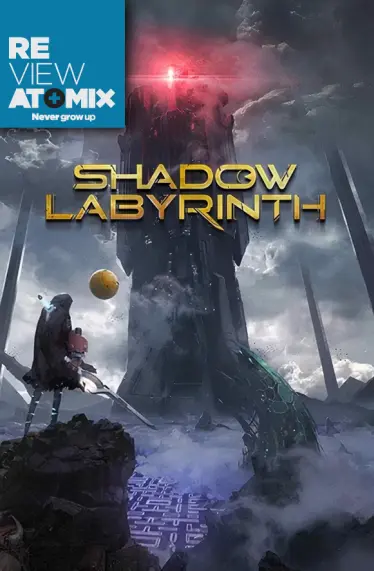


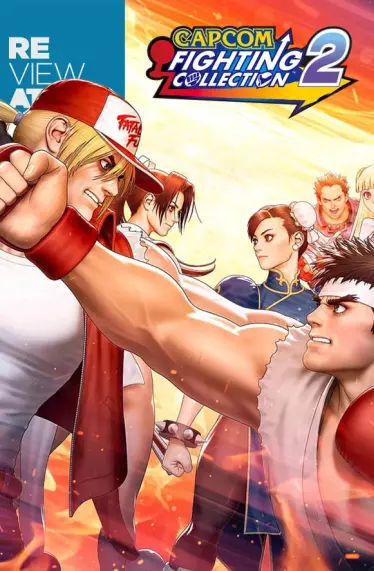

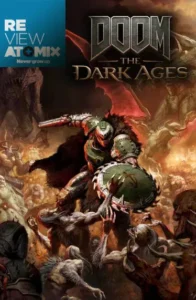


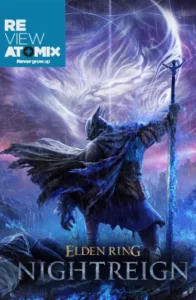

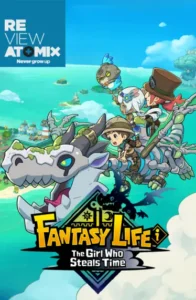
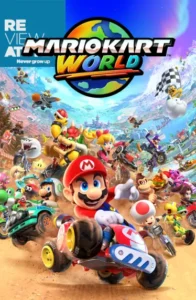
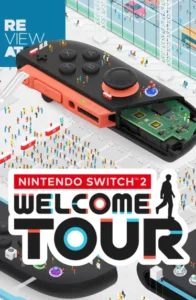
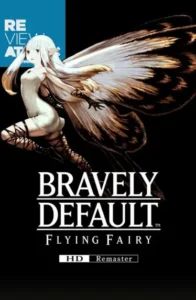
Post Comment